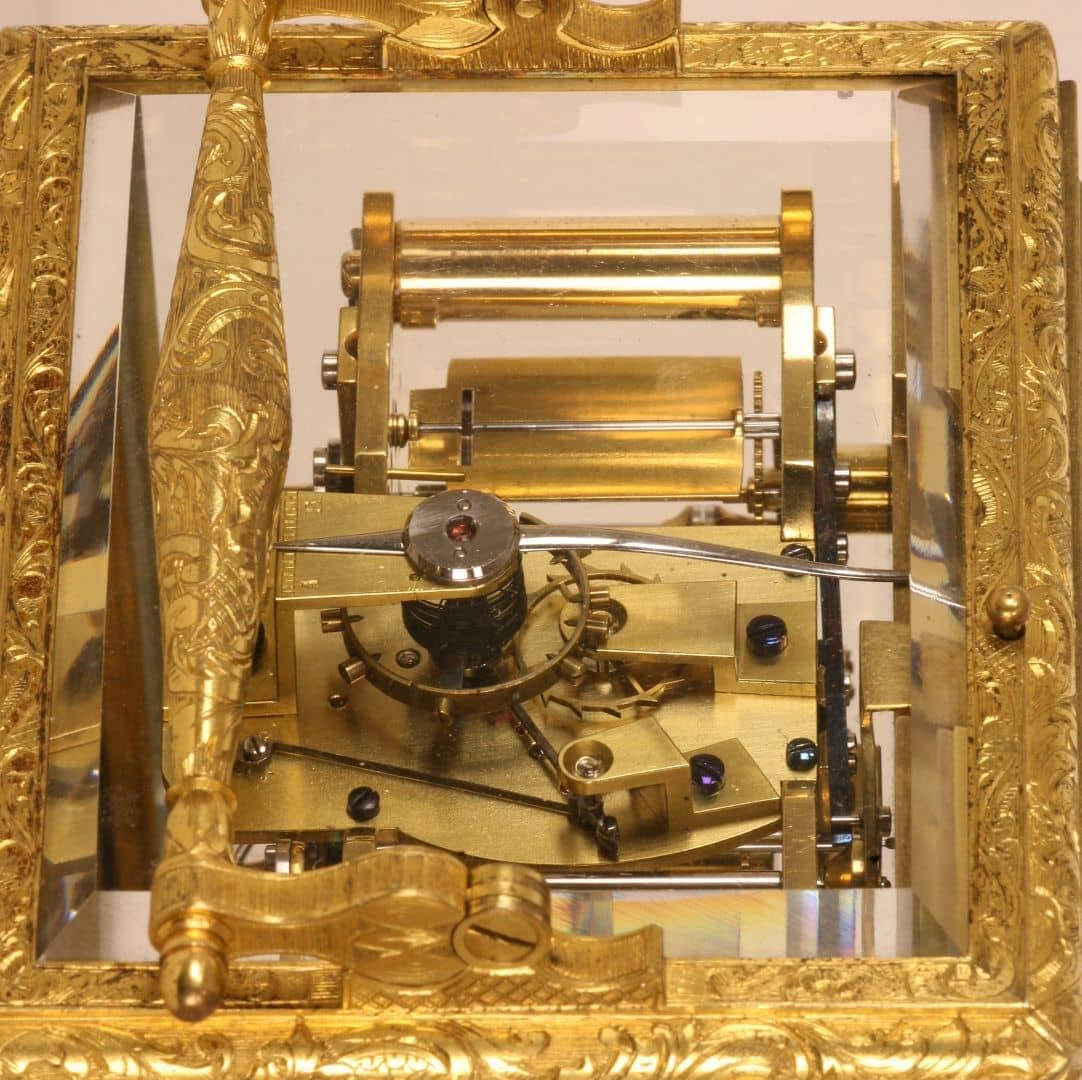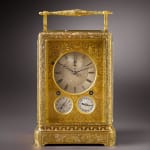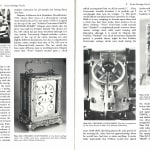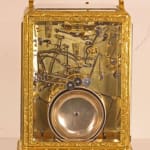Charles Frédéric Klentschi
Further images
Literature
Alfred Chapuis, "Histoire de la Pendulerie Neuchâteloise", 1917, pp. 432-3, illustrating and describing an almost identical clock and its movement by 'Fritz' Courvoisier.
Charles Allix, "Carriage Clocks, their History and Development", 1974, p. 311, pls. X/5 and 6, illustrating an almost identical clock and its complicated movement by 'Fritz' Courvoisier, also signed C.F. Klentschi on the movement, in the Musée d'Horlogerie à La Chaux-de-Fonds.
Derek Roberts, "Carriage and other Travelling Clocks", 1993, pp. 242-3, pl. 154 a & b, illustrating another very similar carriage clock by Courvoisier.
Joseph Fanelli, "A Century of Fine Carriage Clocks", 1987, page 195.
An exceptional large fully engraved Swiss grande sonnerie carriage clock by the famous maker Charles Frédéric Klentschi. The one piece case is nicely engraved all over with a bulbous straight handle at the top, relatively thin framework to the main part of the case and a beautifully engraved base. It has large glazed panels to the front, back, both sides and to the top and has opening front and rear doors. There is a small strike repeat lever slightly offset on the top.
The main dial of silvered brass has a nicely engraved centre with foliate swags and an inset seconds ring at XII. It has Breguet style blued steel hands. Below this are the two subsidiary dials, one for the date and the other for the alarm. The dials are mounted in a well engraved gilded mask.
La Chaux-de-Fonds, date circa 1843
Height to base of handle 20 cm
In the base of the clock are two selection levers, one for petite sonnerie or grande sonnerie, and the other for strike and silent. The top of the baseplate on which the movement is mounted is engraved with a description of the escapement which indicates how exceptional this escapement was considered to be by the maker. It says in French ‘Echappement libre a resort degagement en rubis’ and ‘Dix trois en Pierre en balancier compense spiral isochrone’.
This description relates to the Swiss detent escapement which is jewelled with a cut and compensated balance and has a blued steel helical spring. The backplate of the movement has all of the levers, racks and snails of the strike work fully visible. They are beautifully finished and it is a pleasure to watch them working during striking. The backplate is stamped and numbered for the maker 677CFK, for C F Klentschi. Both mainsprings are signed JST Janvier 1843. This clock has the unusual feature, which we have only seen on the finest Swiss carriage clocks, of striking grande sonnerie throughout the night and petite sonnerie during the day. The changeover occurs automatically each morning and evening.
The maker Charles Frédéric Klentschi was born in 1774 and died in 1854. He is a notable maker and ran a horological school with Maillardet from about 1814. One of his pupils at the school was Fritz Courvoisier who has produced a number of clocks with similar strike work mounted on the backplate. Klentschi also worked for the Courvoisier family. An almost identical clock by Klentschi and Courvoisier, but in a slightly different case, is shown on page 311 of Allix & Bonnert ‘Carriage Clocks’. This has an identical inscription regarding the escapement. That particular clock is in the Musee D’Horlogerie at La Chaux de Fonds. Another similar clock, but signed by Courvoisier, is shown on page 195 of ‘A Century of Fine Carriage Clocks’ by Joseph Fanelli.













